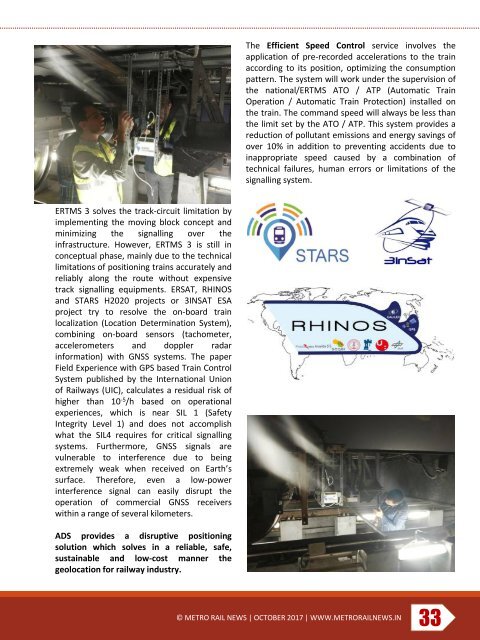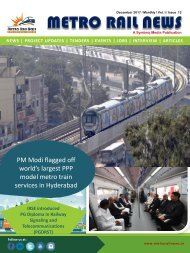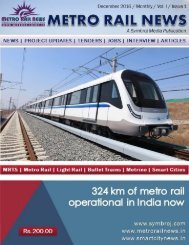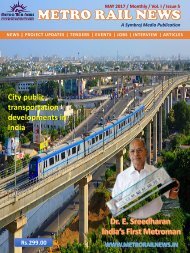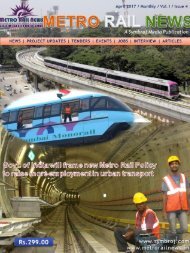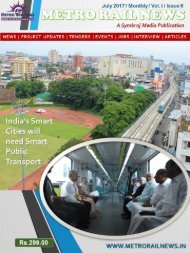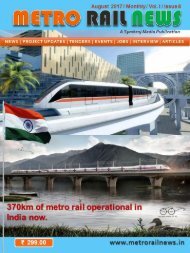Metro Rail News October 2017
October Edition 2017. Owned and published by Symbroj Media Pvt. Ltd., New Delhi, India
October Edition 2017. Owned and published by Symbroj Media Pvt. Ltd., New Delhi, India
You also want an ePaper? Increase the reach of your titles
YUMPU automatically turns print PDFs into web optimized ePapers that Google loves.
The Efficient Speed Control service involves the<br />
application of pre-recorded accelerations to the train<br />
according to its position, optimizing the consumption<br />
pattern. The system will work under the supervision of<br />
the national/ERTMS ATO / ATP (Automatic Train<br />
Operation / Automatic Train Protection) installed on<br />
the train. The command speed will always be less than<br />
the limit set by the ATO / ATP. This system provides a<br />
reduction of pollutant emissions and energy savings of<br />
over 10% in addition to preventing accidents due to<br />
inappropriate speed caused by a combination of<br />
technical failures, human errors or limitations of the<br />
signalling system.<br />
ERTMS 3 solves the track-circuit limitation by<br />
implementing the moving block concept and<br />
minimizing the signalling over the<br />
infrastructure. However, ERTMS 3 is still in<br />
conceptual phase, mainly due to the technical<br />
limitations of positioning trains accurately and<br />
reliably along the route without expensive<br />
track signalling equipments. ERSAT, RHINOS<br />
and STARS H2020 projects or 3INSAT ESA<br />
project try to resolve the on-board train<br />
localization (Location Determination System),<br />
combining on-board sensors (tachometer,<br />
accelerometers and doppler radar<br />
information) with GNSS systems. The paper<br />
Field Experience with GPS based Train Control<br />
System published by the International Union<br />
of <strong>Rail</strong>ways (UIC), calculates a residual risk of<br />
higher than 10 -5 /h based on operational<br />
experiences, which is near SIL 1 (Safety<br />
Integrity Level 1) and does not accomplish<br />
what the SIL4 requires for critical signalling<br />
systems. Furthermore, GNSS signals are<br />
vulnerable to interference due to being<br />
extremely weak when received on Earth’s<br />
surface. Therefore, even a low-power<br />
interference signal can easily disrupt the<br />
operation of commercial GNSS receivers<br />
within a range of several kilometers.<br />
ADS provides a disruptive positioning<br />
solution which solves in a reliable, safe,<br />
sustainable and low-cost manner the<br />
geolocation for railway industry.<br />
© METRO RAIL NEWS | OCTOBER <strong>2017</strong> | WWW.METRORAILNEWS.IN<br />
33


